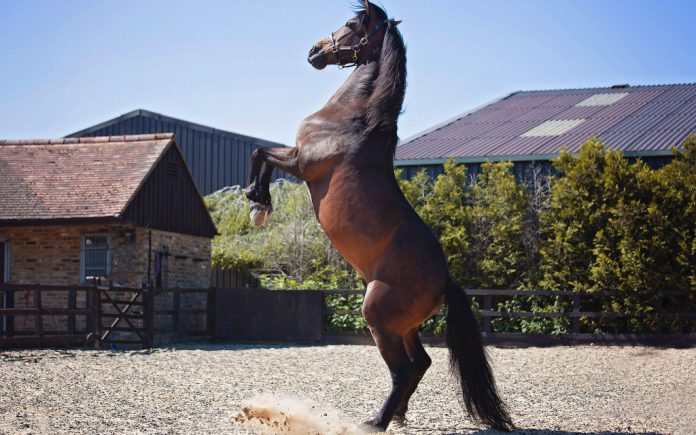There are four diseases that might be dangerous for the horse. Symptoms may start as a slight cough or runny nose, but within days, the horse is running high fever, refusing to eat, or may die. Some horse illnesses are no laughing matter! They can attack the horse’s immune system and knock it down. It’s essential to keep a close eye on your horse for signs, especially if you notice it’s acting strangely. Infectious horse illnesses are those that horses can contract from one another or from a transmitter, such as a mosquito or tick, which can spread the disease from horse to horse. The key to prevention is regular check-up.
Equine Influenza
Equine influenza is a frequent, highly infectious, and self-limiting upper respiratory illness caused by aero-genous influenza virus type A strains. According to Sellon’s Equine Infectious Diseases, “influenza is the most often diagnosed and economically significant cause of viral respiratory illness in horses.” Influenza, sometimes known as “flu”, is observed all over the world, just as in humans. The influenza virus has an extremely short incubation period, with clinical symptoms appearing 48 hours after the infection. In an unprotected horse population with no past contact to the virus, the illness has approximately 100% infection rate. Affected horses often do not feed well and may have enlarged lymph nodes beneath the jaw or in the neck. Other symptoms include muscular aches, secondary pneumonia, and limb edema. There is no therapy other than supportive care, anti-inflammatory medicines, and antibiotics to prevent or cure subsequent bacterial infections.
Equine Herpesvirus
Equine herpesviruses are DNA viruses present in horses across the world. Almost all horses have been infected with these viruses, and a majority of the time there are no significant side-effects. It is unknown what causes infected horses to acquire the potentially deadly neurological manifestations of EHV1. It is infectious and spreads through the respiratory tract via nasal secretions through direct horse-to-horse contact. This virus can also be transferred indirectly through physical contact. The clinical symptoms include hind-limb weakness or paralysis, bladder and/or tail paralysis, and recumbency. Unfortunately, horses can harbour the virus in their nerve ganglia for years, becoming lifelong carriers. Control becomes more difficult as a result. Horse-to-horse transmission occurs through direct touch and indirectly through fomites such as humans, tack, and infected surfaces.

Strangles
Strangles is used to describe an illness caused by the bacterium Streptococcus equi. It is well-known for causing typical abscesses beneath the horse’s jaw, which grows and “strangles” the animal. The bacteria is infectious and readily spreads throughout a barn by contact with nasal secretions, whether directly or indirectly from water troughs, gear, or people. Infected horses can shed the germs for weeks after clinical illness, and in extreme circumstances, horses can retain the bacterium in their guttural pouches for life, becoming lifelong shedders. Strangles clinical symptoms are typical, high temperature (104°F) and copious quantities of hazy white nasal discharge being the most prevalent.
West Nile Disease
The West Nile Virus (WNV) can cause neurological illness and death. WNV is widely prevalent in Africa, Europe, the Middle East, North America, and West Asia. WNV is maintained in nature by a cycle of transmission involving birds and mosquitoes. Humans, horses, and other animals are susceptible to infection. The virus causes neurologic tissue damage in the brain and/or spinal cord, resulting in severe lethargy, depression, trouble while eating and walking. There is an equine vaccine available, but it is not 100% effective against all strains of the illness. Minimizing your horse’s risk of mosquito exposure is critical, and this may be accomplished by reducing mosquito breeding sites.
Horses need constant attention, and regular visits to veterinarians for check-up. It’s important to keep up with the vaccinations. It is advisable to consult with the local event authorities or veterinarians to determine which illnesses are of greater concern in a certain region.





